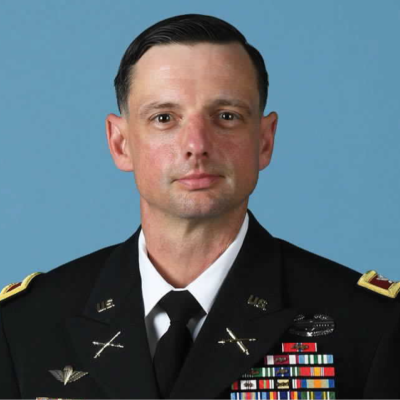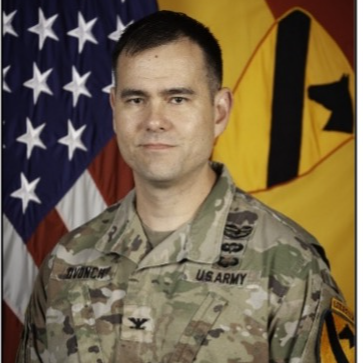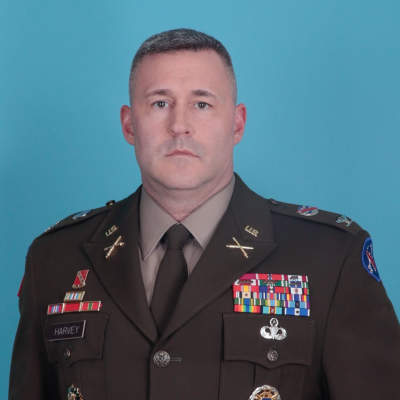Agenda Day 2
Agenda
8:45 am - 9:00 am
CHAIR'S OPENING REMARKS
9:15 am - 9:45 am
KEYNOTE PANEL: TRANSFORMATION IN THE FIRES COMMUNITY
Lieutenant General Miles Brown -
Deputy Commanding General, Army Transformation and Training Command,
US Army (Pending Final Confirmation)
Colonel Daniel Gibson - Division Chief, Capability Directorate, Cross-Domain Fires, US Army
Colonel Nick Dvonch - Brigade Commander, 1st Cavalry Division Artillery, US Army
KEYNOTE PANEL: TRANSFORMATION IN THE FIRES COMMUNITY
Moderator:
Lieutenant General Miles Brown, Deputy Commanding General, Army Transformation and Training Command, US Army
Panelists:
Colonel Dan Gibson, Division Chief, Capability Directorate, Cross-Domain Fires, US Army
Colonel Nicholas Dvonch, 1st Cavalry Division Artillery Commander, US Army
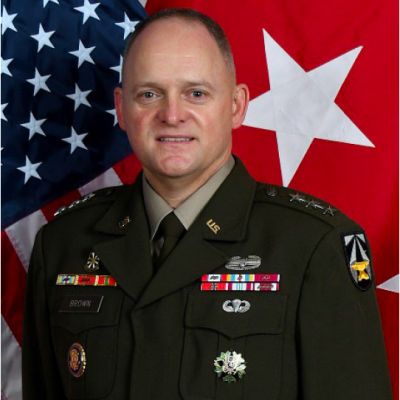
Lieutenant General Miles Brown
Deputy Commanding General, Army Transformation and Training CommandUS Army (Pending Final Confirmation)
9:45 am - 10:15 am
PANEL DISCUSSION: INDIRECT FIRES IN INDO-PACIFIC
Lieutenant General (Ret.) Antonio Aguto -
Former Commanding General, Security Assistance Group Ukraine (SAGU),
US Army
Colonel Jonathan Harvey - Director, Theater Fires Element, US Army Pacific Command, US Army
PANEL DISCUSSION: INDIRECT FIRES IN INDO-PACIFIC
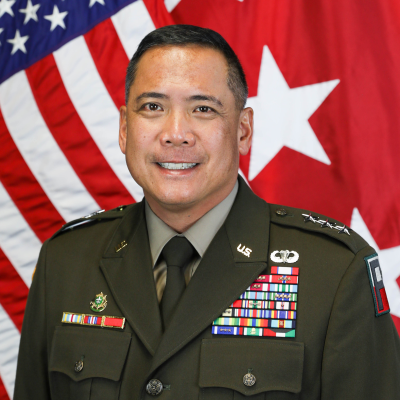
Lieutenant General (Ret.) Antonio Aguto
Former Commanding General, Security Assistance Group Ukraine (SAGU)US Army
10:45 am - 11:15 am
COFFEE AND NETWORKING
11:30 am - 12:00 pm
US ARMY FIRES TESTING AND EVALUATION
Chair: Paul Daniels -
President,
P. Daniels Consulting
Colonel Joseph C. Alexander - Commander, US Army Redstone Test Center (RTC), Army Test and Evaluation Command, US Army
Colonel Matt Johnson - Commander, White Sands Test Center, Army Test and Evaluation Command, US Army
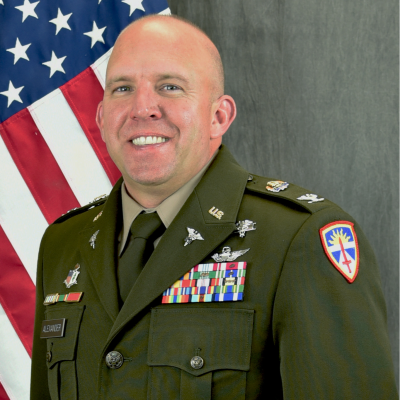
Colonel Joseph C. Alexander
Commander, US Army Redstone Test Center (RTC), Army Test and Evaluation CommandUS Army
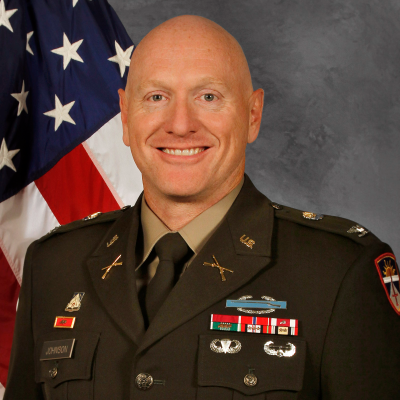
Colonel Matt Johnson
Commander, White Sands Test Center, Army Test and Evaluation CommandUS Army
12:00 pm - 12:30 pm
INDUSTRY INSIGHT SESSION: BRAVO ORDNANCE
Devan Plantamura -
Chief Executive Officer,
Bravo Ordnance
12:30 pm - 1:30 pm
LUNCH AND NETWORKING
1:30 pm - 2:00 pm
FIRES SUPPORT MODERNIZATION, SOFTWARE, & REAL TIME DATA SHARING
Chair: Paul Daniels -
President,
P. Daniels Consulting
Colonel Tyler Donnell - Director, Offensive Fires Transformation and Lessosn Learned Manager, US Army (Pending Final Confirmation)
Lieutenant Colonel Joshua Faucett - Product Manager for Fire Support Systems, US Marine Corps
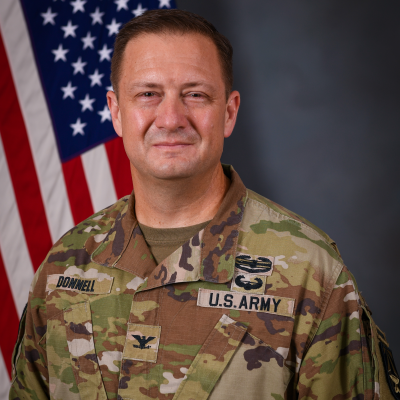
Colonel Tyler Donnell
Director, Offensive Fires Transformation and Lessosn Learned ManagerUS Army (Pending Final Confirmation)
2:00 pm - 2:30 pm
INDUSTRY LEADERS PANEL DISCUSSION
Chair: Paul Daniels -
President,
P. Daniels Consulting
Todd Mueller - Executive Director, Fires Capture Programs, Land Systems, Hanwha Defense USA
INDUSTRY LEADERS PANEL DISCUSSION
Moderator:
Paul Daniels, President, P. Daniels Consulting
Panelists:
Bryan Gundrum, Vice President, Engineering Integrated Solutions, Elbit Systems of America
Todd Mueller, Executive Director, Fires Capture Programs, Land Systems, Hanwha Defense
2:30 pm - 3:00 pm
TESTING INSIGHTS FROM FORT SILL
Colonel Tony Perez -
Director, Fire Support Test Directorate at Fort Sill, Oklahoma,
US Army
3:00 pm - 3:30 pm
COFFEE AND NETWORKING
3:30 pm - 4:00 pm
ACCURATE AFFORDABLE INDIRECT MASSED (AAIM) FIRES TECHNOLOGIES
Dave Musgrave -
Chief Engineer for DEVCOM-AC’s Artillery Fire Control Systems Division,
US Army
ACCURATE AFFORDABLE INDIRECT MASSED (AAIM) FIRES TECHNOLOGIES
• S&T effort out of DEVCOM AC
• Minimize errors in ballistic artillery and improve the accuracy of conventional ammunition
• Mature and demonstrate multiple technologies to incorporate into various 155mm systems
Dave Musgrave, Chief Engineer for DEVCOM-AC’s Artillery Fire Control Systems Division, US Army

Dave Musgrave
Chief Engineer for DEVCOM-AC’s Artillery Fire Control Systems DivisionUS Army
4:00 pm - 4:30 pm
PANEL DISCUSSION: PROGRAMMING, ACQUISITION AND THE WAY FORWARD
Chair: Paul Daniels -
President,
P. Daniels Consulting
Colonel Leon L. Rogers - Project Manager, Military Deputy to the DASA-PPR, US Army
Colonel Daniel Gibson - Division Chief, Capability Directorate, Cross-Domain Fires, US Army
- PANEL DISCUSSION: PROGRAMMING, ACQUISITION AND THE WAY FORWARD

